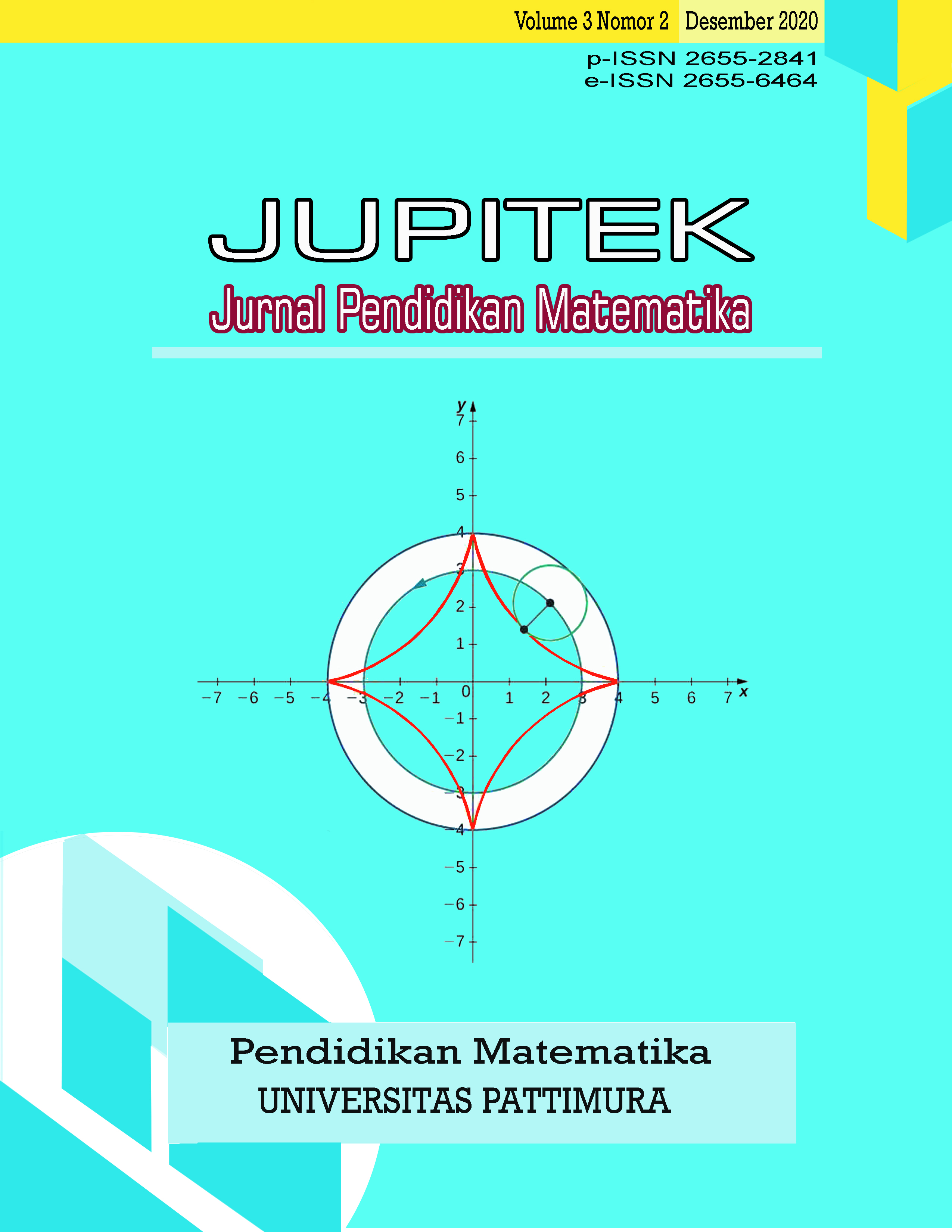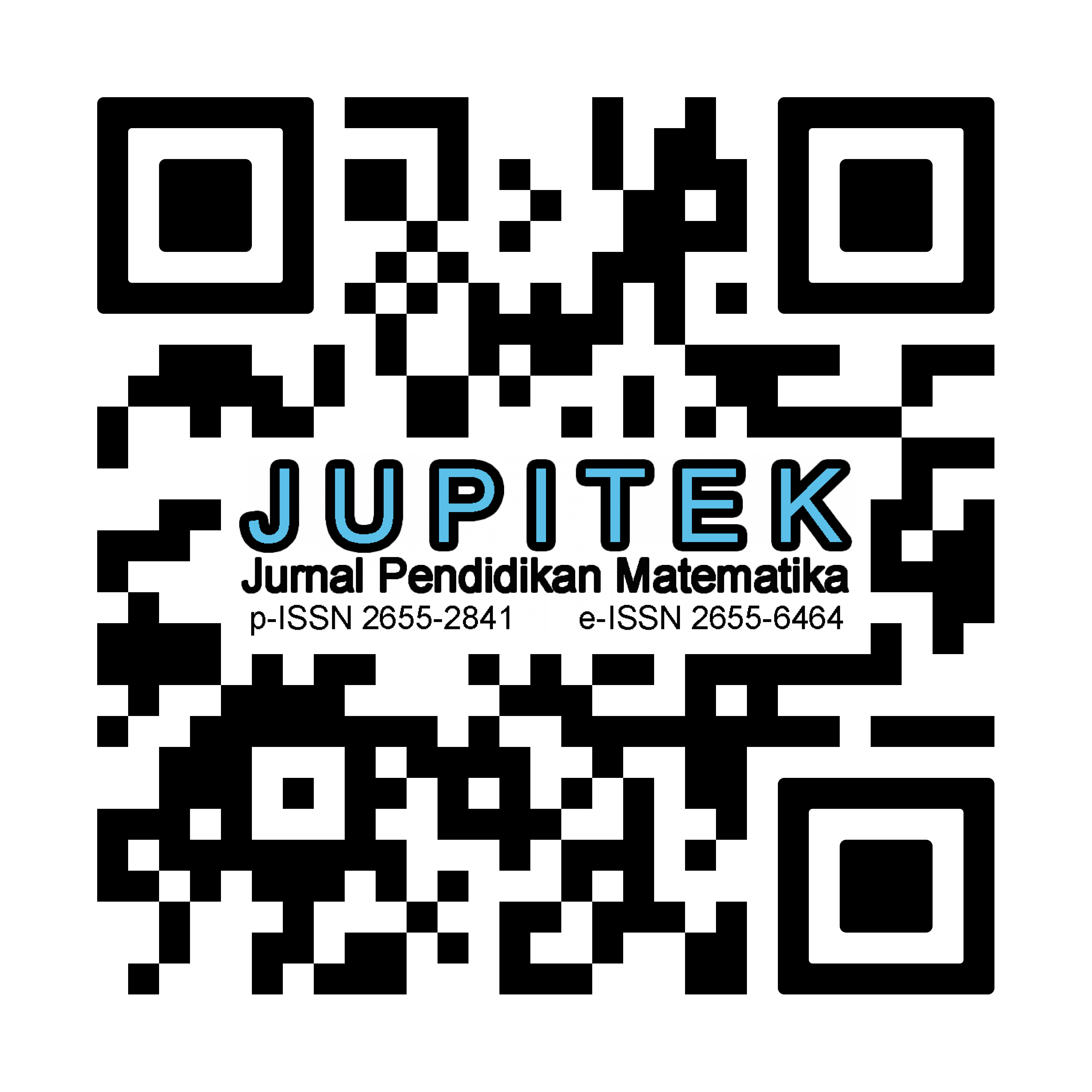THE STUDENT OBSTACLES OF CREATIVE THINKING IN SOLVING MATHEMATICS PROBLEM
Abstract
This study aims to describe the obstacles in creative thinking of class VIII students in solving class math problems about comparison. Creative thinking indicators consist of fluency, flexibility, and novelty. This type of research is qualitative descriptive. The subjects in this study consisted of 16 people who were students of SMPN1 and SMPN4 in Malang. The data collected in this study are student worksheets in solving problems of comparison and interview pieces. The results of this study found out of 16 there were 6 (37,5%) students who were not creative, 3 (18,75%) students were less creative, 2 (12,5%) students were quite creative, 3 (18,75%) students were creative people and 2 (12,5%) students were very creative. Obstacles from students who are not creative, less creative and quite creative are mistakes in understanding questions, easy self-satisfaction and lack of student experience
Downloads
References
Johnson E. B. (2007). Contextual Teaching and Learning: Menjadikan Kegiatan Belajar-Mengajar Mengasyikkan dan Bermakna. Bandung: Mizan Learning Center
La Moma. (2015). Pengembangan Instrumen Kemampuan Berpikir Kreatif Matematis Untuk Siswa SMP. Jurnal Matematika Dan Pendidikan Matematika. Vol. 4, No. I
Munandar, U. (2009). Perkembangan Kreativitas anak berbakat. Jakarta: Rineka Cipta.
Panjaitan, A. H. (2017). Creative Thinking (Berpikir Kreatif), (December): https://www.researchgate.net/publication/3218491.
Pehkonen, E. (1997). The state-of-art in mathematical creativity. ZDM - International Journal on Mathematics Education, 29(3), 63–67.
Oslon, R.W. (1992). Seni Berpikir Kreatif. Jakarta: Erlangga
Silver, E. A. (1997). Fostering creativity through instruction rich in mathematical problem solving and problem posing. Zentralblatt Für Didaktik Der Mathematik, 29(3), 75–80
Copyright (c) 2020 Elvira Magdalena Purba

This work is licensed under a Creative Commons Attribution-NonCommercial-ShareAlike 4.0 International License.
License and Copyright Agreement
By submitting a manuscript to Jurnal Pendidikan Matematika (JUPITEK), the author(s) certify and agree to the following terms:
- Originality and Authority: The submitting author is authorized by all co-authors to enter into this agreement. The manuscript describes original work that has not been published previously in a peer-reviewed journal, nor is it under consideration for publication elsewhere.
- Approval: Its publication has been approved by all author(s) and by the responsible authorities of the institutions where the work was carried out.
- Rights: The authors secure the right to reproduce any material that has already been published or copyrighted elsewhere.
- Licensing and Copyright: Authors retain the copyright to their work.
- License Grant: The authors grant Jurnal Pendidikan Matematika (JUPITEK) the right of first publication, with the work simultaneously licensed under the Creative Commons Attribution-NonCommercial-ShareAlike 4.0 International (CC BY-NC-SA 4.0).
- Self-Archiving: Authors are permitted and encouraged to deposit the published version of their article in institutional repositories, on their personal websites, and other academic platforms, with proper acknowledgment of its initial publication in Jurnal Pendidikan Matematika (JUPITEK).






.png)


